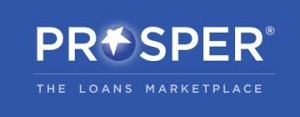 I’ve reviewed in recent columns what I believe happens when interest rates rise this Summer, in particular what happens to real estate when the FOMC raises the Fed funds rate, Aka “The One Rate To Rule Them All.”
I’ve reviewed in recent columns what I believe happens when interest rates rise this Summer, in particular what happens to real estate when the FOMC raises the Fed funds rate, Aka “The One Rate To Rule Them All.”
“…Nine for consumers doomed to die
One for the Yellen on her dark throne
In the land of FOMC where the money’s born…”
While rate hikes generally hurt, I don’t expect this rate hike to change much for consumer interest rates.
Consumers already face a very wide range of interest rates, from 2% Prime auto-loans, to mid-range consumer debt at less than 10%, to the mid-20% for credit card debt, even to stunning 100%+ annual rates for payday loans.
Just as the humans of Middle Earth experienced vastly different Rates of Power, so too do we humans of this Era already face vastly different rates.
I’ll review these different ends of the consumer-borrowing spectrum in turn.
Cheap Prime rates disappear
The very cheapest consumer loans may jump a bit this Summer.
Locking in cheap student loans, mortgages, and auto-loans in this Era left us feeling like the Dúnedain, noble and heroic borrowers.
Credit Unions that offered 1.9% auto loans probably stop doing so immediately following the jump in rates. Historically low rates spurred auto purchases, making us Riders of Rohan, racing across the plain on our fresh swift horses.
In addition, low rates like my 15-year mortgage at 2.75% probably cease being available. In retrospect, those rates will mark a low-tick of the interest rate market.
For a high credit borrower collateralized by a car or home, however, we’re probably only looking at a 1 to 2% jump after rates rise.
Uncollateralized personal loans for high credit borrowers – like you can see on a crowd-sourced lending site like Prosper.com – currently run in the 6 to 8% range. Those rates likely jump a bit as well following the Fed funds hike this Summer.
Credit cards
Moving a bit higher on the consumer interest rate scale, I doubt credit card rates move much at all.
Your basic credit card rate balance already charges substantially high rates. The national average credit card rate on balances runs around 15% right now, which is high enough to leave your finances feeling as woozy as King Théoden under the influence of Wormtongue.
And that’s just the average. The highest rate you will see quoted nationally is 29.9%, although penalties and fees can push effective rates higher than that. As long as they can limit defaults, banks don’t really need to raise credit card rates above 15% to 29% to stay profitable, when the Fed funds rate rises.
What about those seemingly attractive 0% interest balance transfer requests that come in the mail? Will those go away when rates rise? I doubt it.
0% balance transfers
Credit cards offers to consolidate balances at 0% for 6-12 months probably continue even after rates start to rise, because these aren’t really 0% loans.
In the fine print of most of these so-called 0% offers is the requirement that you pay an upfront 3% ‘consolidation fee’ for the privilege of a supposed 0% balance transfer. When you translate the 3% fee into an annual rate, you get something not at all close to the advertised “0% loan.”
How is this not really a 0% loan, but instead is a nasty trick perpetuated by a Saruman-like wizard, in the service of the Dark Lord? Let me explain.
If you transfer a high interest $10,000 credit card balance on which you had been paying, say, 18% per year, it is true you would cease having to pay $150 in monthly interest on your balance.
You would instead pay an upfront 3% fee of $300 (on the $10,000 balance in this example). Even if you paid off that loan after six months – before the 0% rate goes away – you’ve already paid an effective 6% annual rate. Credit card banks will happily take that initial 6% rate when they know they’ll most likely have you paying something like the old 18% on the balance, when the six months is over. Since you’re really paying at least 6% rather than 0%, I think banks will find it worth their while to continue those supposed 0% balance transfers.
But that’s not the worst consumer loan ever.
The Nazgûl of Lending
Payday loans – the Nazgûl of consumer lending – obviously can’t go higher from here. These loans, higher than 100% annually, prey from above on the finances of the people below. These are shrieking nails-on-chalkboard black-winged creatures.
Even Yellen in the land of FOMC cannot push these rates higher.
I just looked up a payday lender online and found I could borrow $500 for 30 days, and owe $629.92 at the end of the month. That’s a 315% annual borrowing rate.
The good news? (He said, ironically.) That rate is not going up this Summer, either.
Please Éowyn, or somebody, put a sword through the crown of these undead creatures.
Please see related posts
Lord of the Rates Part I – One Rate To Rule Them All
Lord of the Rates Part II – On The FOMC ‘Printing Money’
Lord of the Rates Part III – The Mortgage and Real Estate Market
Post read (1111) times.


